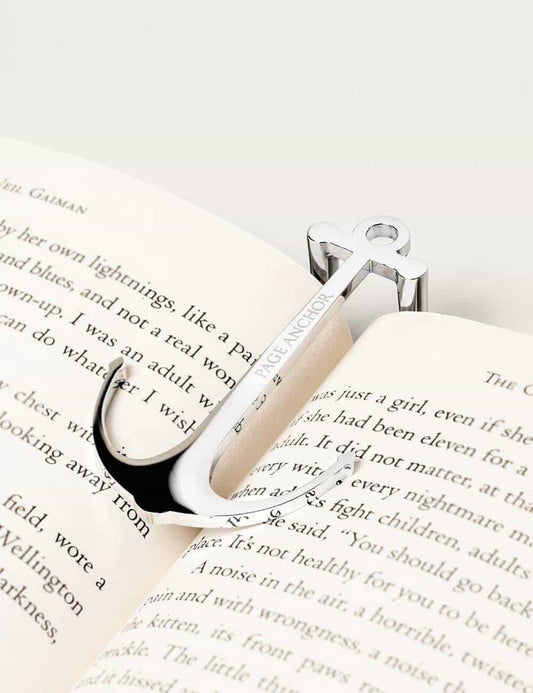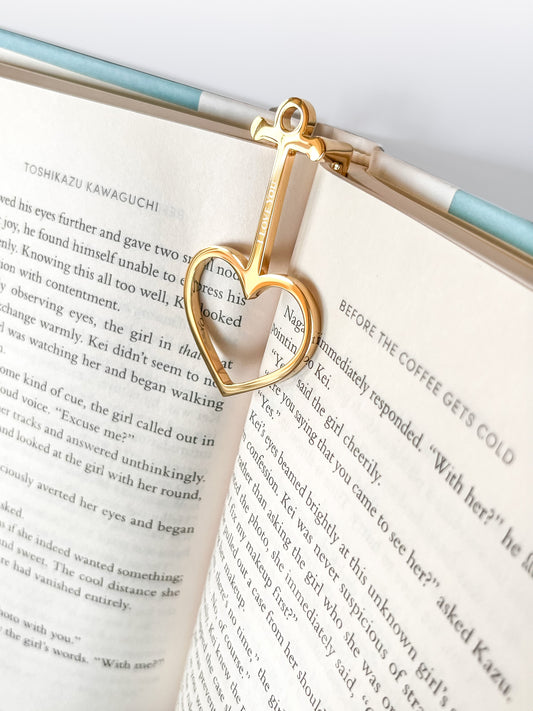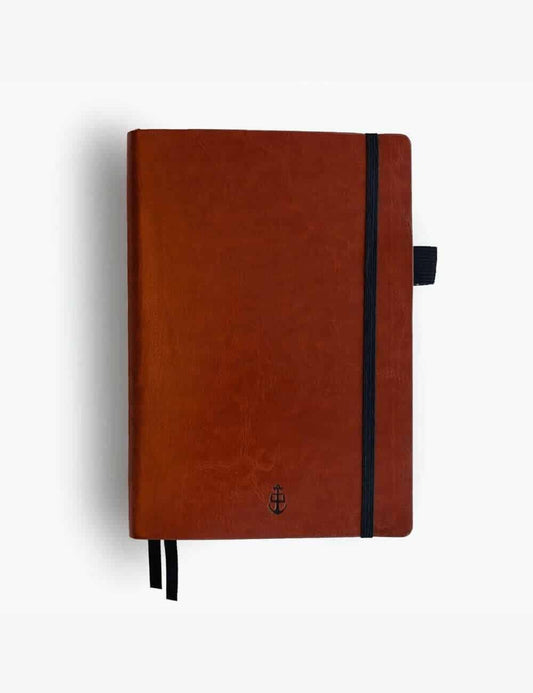Disclaimer: The estimated read time for this article is 30min. Want to save this guide for later? Click to download this Bookstagram guide as an eBook →
It is rare to come across such a positive and uplifting community as the one known as #bookstagram.
In short, Bookstagram is a small section of Instagram, populated by — you guessed it — book photography. Packed with beautiful book-related art, Bookstagram has a place for every type of reader interested in sharing their love for books.
Our first experience with the community’s love came when we first registered the @pageanchor account.
We weren’t sure what to expect, as we had little experience within Bookstagram, yet alone running an account. All worries were quickly brushed aside, though, as we were shown nothing but support and love.
Now, it is our turn to give back.
In this article, we’re going to cover the fundamentals of starting and running your very own Bookstagram account, using the tips from some of the most talented people we’ve come to know — all to make sure you have all the tools you need to grow your very own account.
Here are the steps we will be covering in this guide:
- Choosing the right equipment — ft. @littlelattelibrary
- Finding your style & theme — ft. @sabrinafelizitas, @celine.depoitiers, @beingabooknerd & @dustpages
- Being creative — ft. @dustpages & @tildareads
- Perfecting setting & lighting — ft. @thebibliotheque
- Apps & Editing — ft. @libretto_reviews
- Interacting with your followers—ft. @lostinabookishcollection
- How to grow — ft. @lifeandliterature, @thejournaltea, @stefiereads

Getting started
Starting off, we’re going to go ahead and assume that you know what Instagram is, as well as how to set up an account. Most of you probably already have an account that you are posting on, possibly even as a part of Bookstagram.
While we won’t be covering how to get started on Instagram, we do want to cover all parts related to getting started on Bookstagram. By compiling the thoughts of some of the best accounts we know, it is our hope that you will be able to answer any questions that may have been holding you back.
Let’s get started.

1. Choosing the right equipment
After taking the time to look through some photos on Bookstagram, it may at first glance seem a daunting task to get started yourself.
A lot of photos are taken with DSLR cameras and with what may seem like professional lighting setups.
This is simply not true.
While a great camera can make certain shots more visually appealing, it is far from a necessity. The truth is that there are plenty of amazing accounts using phones as the primary camera.
People often assume that a DSLR camera is a requirement for having a great Instagram profile.
It is not!
I’m not going to lie, quality does a lot for the first impression of your profile—but it is far from everything.
In the beginning of my Bookstagram journey, I loved to use my phone. It was absolutely perfect for taking good pictures quickly. No lenses and tripods required.—@sabrinafelizitas
1.1 Essential Equipment for Creating Stunning Instagram Photography (@littlelattelibrary)
Despite Instagram’s humble beginnings in 2010, long gone are pixelated photographs of #pets, bad to worse #breakfasts, heavily filtered #sunsets.
Instagram in 2017 offers a very different outlook.
Photographs on your feed are sleek, crisp and polished to perfection. Thousands of accounts promise visually stunning photographs to keep you scrolling until the early hours of the morning.
While professional setups may be increasing in popularity, it certainly doesn‘t mean you must have a professional’s budget to create stunning photographs for your feed.
Lighting is your best friend
No matter what camera you own, what props you use, or how many filters you apply, nothing will affect the quality of your photos like lighting.
This is your most powerful tool and used well can help you create beautiful, eye-catching photographs instantly.
While you could invest in professional lighting to combat the uneven hues, which often accompany natural lighting (here’s looking at you over-exposed sunny days), budgets don’t always allow for such dreams.
Nonetheless, natural lighting used correctly can make or break a photograph, which is why it is vital to find the brightest room in your humble abode. Think of the lighting as the foundation to your photographs. Without it, you cannot continue to build that Instagram-worthy castle.
When it comes to lighting, natural light is my favorite. I always take my pictures infront of a large window, and it really makes a difference.
If you find yourself lacking natural light (especially in the winter), you can use a softbox. It imitates natural light and is very popular on YouTube. Personally, I don’t use one due to the impractical size of them.—@sabrinafelizitas

The Camera doesn’t lie
Take your humble smartphone. Their camera can be used for so much more than taking a quick selfie or two.
Smartphones
Captured with rather uneven lighting, this is an example of a raw, unedited smartphone photo, captured with an iPhone 7:
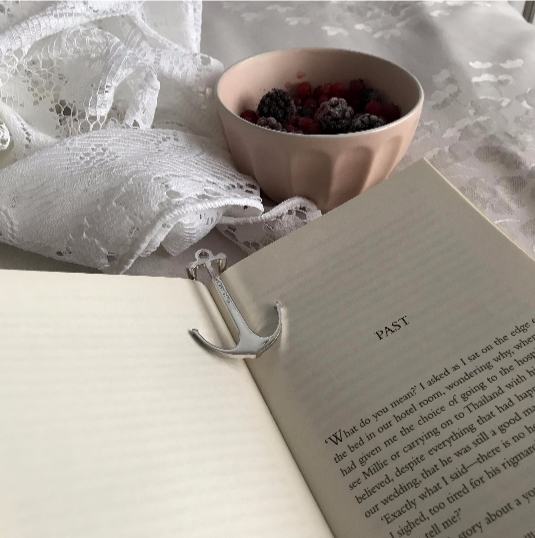
It’s dark, gloomy and certainly doesn’t strike you as memorable content. While it’s easy to dismiss this as being unsuitable for your feed, try to salvage it first with a selection of photo-ready apps. Your smartphone’s camera can always surprise you.
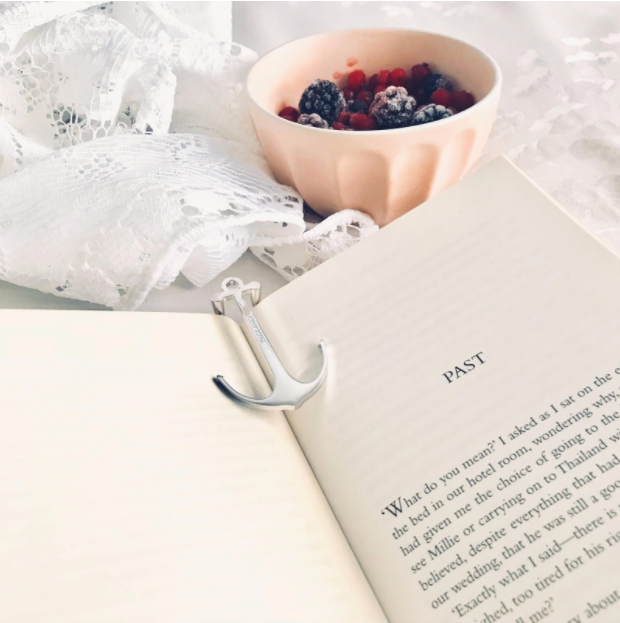
Yet comparing both photos, it's perhaps surprising to discover that the second photo was edited entirely using the iPhone’s editing software.
No apps, no filters, just basic iPhone settings. One of the main differences is simply the level of brightness, which was very easily adjusted before capturing the shot.
Need another trick? Switch on HDR mode.
Designed to battle patchy lighting, it is vital to master if you plan to use your iPhone to make waves in the Instagram community. The HDR feature allows for crisper, detailed lighting which banishes gloomy, dim lighting from your feed. More on this later.
DSLR
For those of you with a slightly higher budget and interest in photography, there is the option to invest in a DSLR camera.
With brand new models ranging anywhere from £289 to a whopping £5,000, it’s best to research the best model for you and your budget.
Limited cash, but still longing to live life behind a lens? Second-hand models are not to be overlooked, with plenty of used (but loved) cameras in need of a suitable home.
Life Through the Lens
If you were to decide on the DSLR route, there are two staple lenses which are guaranteed to transform your Instagram feed:
Canon EF 50mm Lens f/ 1.8 Aperture
Although small, this lens certainly packs a punch. Portable, powerful and possibly my favorite, this lens has the capability to brighten a photograph before it reaches the editing stage.
Lowering the aperture to 1.8 (which allows more light to enter the lens) you can also create brilliantly bright photographs, with a soft focus.
Below are a few images taken with this fantastic lens (and edited later on):
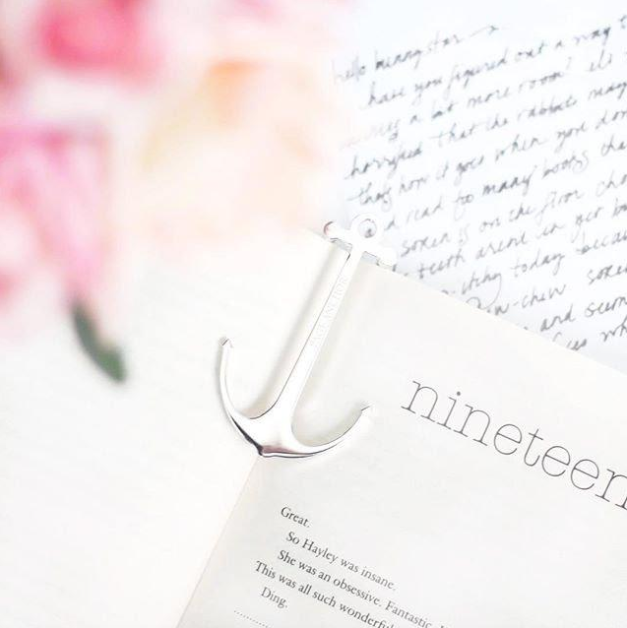
Canon EF 18–55mm f/3.5- 5.6 Lens
A little bigger than its companion the 50mm, this lens doesn’t hold the same brightening capabilities. Its secret weapon? The ability to zoom in and out. Okay, so not revolutionary for a lens I know, but for Instagram? It’s golden.
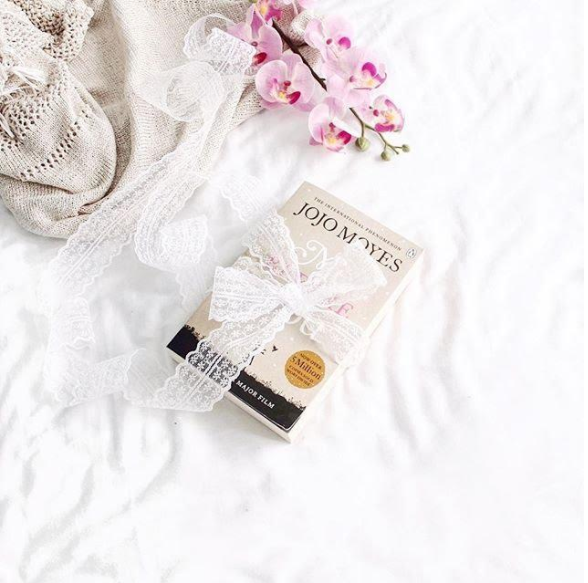
Unlike the 50mm which requires you to move manually towards or away from an object, the 18–55mm will alter how you take flat lays forever.
Instead of having to clamber on an old chair that may or may not collapse at the snap of a shutter, this lens can create the motion of being further away.
In relation to the standard square layout that Instagram is famous for, organizing your flat lay in the center of the photograph allows you more freedom to crop it how you want.
No matter what your budget, equipment or setting, it is always possible to create your dream theme.
While Instagram has grown to become a staple in our social media diets, it’s important to note that equipment is but a mere helping tool. Ultimately, expressing yourself is more important, however that may look.

2. Finding your style & theme
“Being different is a revolving door in your life where secure people enter and insecure exit.” — Shannon L. Alder
The Page Anchor Instagram account has gone through several changes since it was first started in late 2016.
Our first theme idea was to post 6 consecutive images in the same color scheme at a time, to maintain differently colored “blocks” when looking at the feed.
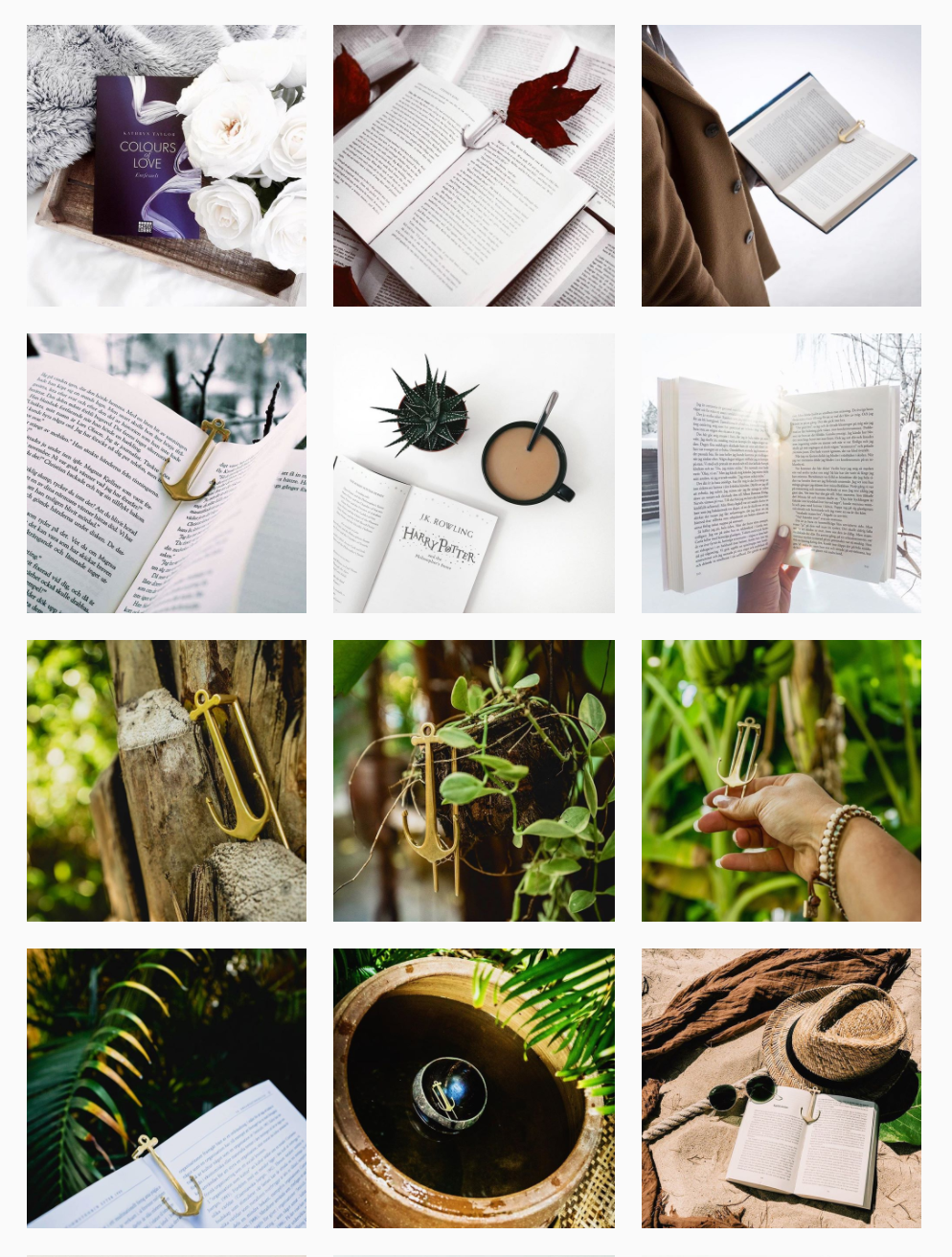
While there was nothing wrong with the quality of the photos, nor how they looked together, we soon realised that we weren’t happy with the results. Not only was switching themes a huge challenge while trying to post consistently, but it did not connect well with the Page Anchor brand.
It felt very mechanical in a way and did not portray simplicity and heartfulness, which are two of our core values.
When trying to find your style, our best advice would be to stay patient and try different things. Don’t get discouraged by the fact that you won’t be 100% satisfied with your feed in the start. This is completely normal.
Experiment and try new things, and don’t forget that the account is yours to change at any time.
2.1 Developing a theme (@dustpages)
When I first started my Instagram I took photos sporadically, with things I found around my house as props.
That was what I call the experimenting stage.
I was always browsing Bookstagrammers I admired, and I noticed how most accounts have a specific style that differentiates them from others.
While some might have bright, colourful photos, others may focus on staying minimal and not including a lot of color at all.
To me, style is greatly be influenced by our personalities, and
that’s what makes each bookstagram unique. When creating my theme, I tried to portray my personality and create a theme around it.
After a lot of experimenting with colors, light and editing, I finally found my style.

Now of course it’s nowhere near fully developed, but I am happy where it is right now.
One thing that helped me tremendously in taking pictures that would work together on my feed, was color coding my theme.
I took some time to think about what colors represented me, then I looked at the books, props and surroudings (my room) that I had to work with.
Most of my books are black, white and blue, and my room is pretty bright and white, so I decided to have a cool, light theme.
Of course, there is nothing stopping you from adding some pops of contrasting colors to your pictures, wear a bright yellow t-shirt for example.
Overall I think the best thing you can do for finding your style and theme is keep experimenting, and look around you. Ask yourself, how can my theme best reflect my personality, and I’m sure that in no time, anyone who clicks on your profile will want to tap the follow button immediately.
2.2 The importance of a theme (@beingabooknerd)
It’s no secret that Bookstagram — or Instagram in general — is not only about photos and content anymore. Having an aesthetic feed is just as important.
A theme can be determined by anything, really: a filter you apply to all your pictures or perhaps a certain background you use.
Just make sure that all your pictures match and fit into your theme.
Why bother with matching photos?
To me, having a nice feed is one of the main keys to success on Bookstagram.
Think about it, when people stumble across your account the first thing they will notice is not the beauty of each individual photo, but the collective picture of them together.
If they like it, they are way more likely to take a closer look at your pictures or instantly give you a follow.
There is obviously no rule stating that your photos have to be in one certain theme, but if you want to draw attention to your account then I’d definitely recommend creating one.
It won’t come easy
Choosing (and sticking to) a theme can be very difficult in the beginning. When I was a Bookstagram newbie, I struggled a lot with it. To be frank, my account was one big colorful mess.
Once you start trying to figure out which theme your account should have, be sure to spend time looking at other Bookstagrammers’ accounts.
Do not copy anyone’s theme, but finding styles that you like is a great way to start developing your own.
It will help you get a basic feeling for what you want your Bookstagram to look like.
Ask yourself basic questions
Do you want to use a lot of props for your photos, or are you more the minimalistic type? Is your feed colorful? Are you looking to use nature themed backgrounds or a clean white one?
There are infinite possibilities, so just try to collect some ideas for themes that YOU consider to be aesthetically pleasing.
Once you start editing your photos, you will notice that similar styles of editing for all your pictures will make them fit even better into your feed.
Try to be consistent. Before deciding on a style, don’t shy away from trying out different filters and theme styles! You might end up liking something unexpected.
It takes time
Don’t expect to find your perfect theme right at the beginning.
It’s normal to not be completely satisfied with your feed at the start. At the end of the day, it’s a learning process, so just trust that it will get better over time.
I went through many different themes before I found something that I was happy with.
My first attempt at a theme included white backgrounds and many props like Funko Pop Figures. I tried out different filters, attempted to take more minimalistic pictures. It took me months until I found the perfect theme for my Bookstagram, the one I’m still sticking to today.
I put myself under a lot of pressure, but please don’t make the same mistake! No one expects your account to be perfect right at the beginning.
2.3 Finding your personal style (@celine.depoitiers)
To me, finding your own style is one of the most challenging tasks related to starting a Bookstagram account.
There are so many inputs, beautiful pictures, accounts, and ideas around that it can be hard to find your own path.
Sometimes we all feel the pull: the thought of copying and replicating that one particular photo that we love and admire so much, all to increase the beauty of our own accounts.
I urge you to resist. The key to a successful Bookstagram lies in staying original. Ultimately, it is what others will follow you for.
Being original
To me, being original starts with thinking of something you feel very strongly for. For me it’s both the autumn season, with its harvest and colors; and the winter season, with the coziness and the blankets.
Other people might prefer bright and colorful settings, perhaps reminding of spring and blooming flowers.

There isn’t a perfect style. There is only YOUR style.
If you like tea, great, go for it! Make it simple and add everything tea related in your pics.
Do you like coffee? Add coffee beans, cups of espresso.
Once you’ve found a style that suits you and makes you feel happy when you take your pictures, stick with it.
I would advise not changing your theme too much, once you’ve found something that you like. Strive towards having people recognize your work before even looking at who posted the picture.

3. Being creative
I feel like the most important thing when wanting to be creative is to just start.
Just do it. Put colour on a page to get rid of the fear you feel when you see how empty it is. Get inspired by others and try picking an element of their work as a starting point. Recreate it in your own way until it feels right.
Just do it, and I promise you will love it. — @agirlwithajournal
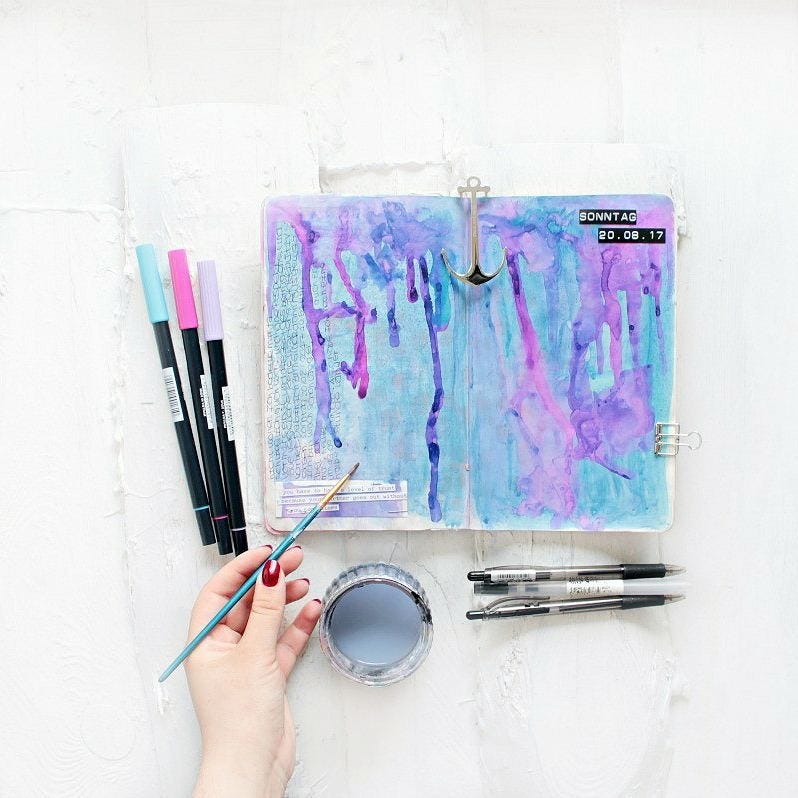
3.1 Creativity requires effort (@dustpages)
To me, being creative is a very important part of bookstagramming. But it is also one of the most challenging things to be.
Creativity is far from a switch you can just turn on whenever you feel like it. It’s something that takes a bit of time to get into; a process.
To me, creativity usually starts with getting in the mood to take pictures.
Often times, there is something that triggers it, like seeing that the light is going to be perfect for my pictures. Another trigger could be buying a new book that I think would look amazing in my Instagram feed, or the classic — running out of photos to post.
It’s important to remember that there will be plenty of times where a photo idea does not come to you by a trigger. There will also be times where you might not be feeling creative.
Don’t let this stop you, your photos can still turn out great.
Here is my general process I follow when starting a photo session:
Prepare
First off, I always like to take down books I think would complement my feed, or simply books I love and appreciate. To demonstrate, here’s an example using a Harry Potter book.

Once I have my book of choice, I start pairing it with props that work well with the book. In this case, I am going with a Ravenclaw theme to pair with this 20th Anniversary Edition of Harry Potter and the Philosopher’s Stone.

Here you can see the finished product.
To match the book, I used props that in some way can be associated with Ravenclaw (astrology, plants, the feather pen for wisdom, and also the crystal ball which in reality is a lightbulb from a strand of outdoor lights).
Experiment
I always like to try different angles, different arrangements, different props until I’m happy with the result.
This can take many tries, but I always like to play around with the books and props I have around me. I find that having all props and books in sight helps a lot.
Don’t be afraid to switch it up and ask for help. Try asking your friends or family to model for you, or let them take shots of yourself.
The most important thing is to have fun while taking photos, and by all means, do not make it a chore. Often times, the best results come when letting creativity run wildly, so don’t stress too much about it.
Battling periods of uncreativity (@tildareads)
Some days, every photo you take might seem to turn out the same, and you might feel like you can’t come up with anything new and exciting.
For days like these, I have a few tips that tend to work for me.
Pinterest is such a life saver. Whenever I’m lacking creativity, Pinterest is always my first stop.
There are so many amazing photographs to be found, and hopefully you will find something that inspires you. Remember to credit the original photographer if you decide to use a particular photo as inspiration and yours turns out very similarly!
Changing your surroundings
From time to time, my photos have a very similar appearance, as a result of me getting too comfortable using my bed as background.
You’re most likely going to feel the same way—and times like these are a great opportunity to try something new.
Use your lack of creativity as an opportunity to try something new! If you take most of your pictures inside, see what the world through the lens looks like outside and vice versa.
If you tend to take pictures of open books, try closing it.
Perhaps you’ve got something pretty lying around your house that you’ve never thought considered using in a picture. Find a way to use it!
Basically, try not to limit yourself to your usual way of taking pictures.
Remove the books
Wait—aren’t books what make the picture fit for Bookstagram? Well, no.
While Bookstagrammers pretty much always uses books as the primary objects in their photographs, there is so much more that can be done.
Think about it, books contain a whole cast of characters, a story, maybe even a world completely different from ours. These are all great sources for inspiration.
Don’t worry
Remember that no one can produce endless amounts of original and creative posts, and often times a nice looking picture is just as great as a super creative one. What’s most important is that you enjoy being a bookstagrammer!
I hope that these tips were helpful and that you found something you can use the next time a creativity slump comes your way.
Good luck!

4. Perfecting setting & lighting (@thebibliotheque)
Oh, hi! Hi there, if you are here that means you are looking for some tips on how to become a bookstagrammer. Or maybe you already have plenty of experience in bookstagram and you are here to discover new things that can help you improve.
Either way, kudos to you for wanting to up your bookish game and for trusting my pals from Page Anchor to help you with it. As you see, they have put together a fantastic guide after gathering quite the team of bookstagrammers.
From smaller to bigger accounts, each of them overflows with talent and is different in their own way, so trust the team behind this guide because it is just fantastic — and as you see I am praising myself shamelessly.
Jokes aside, I am here to help guiding you, to give you some tips and tricks that you may or may not know already, or perhaps to enlighten the way you look at things when you are taking photos of those beautiful books of yours.
And before I forget, allow me to present my credentials: I am the lover of all cute and cheesy behind the Instagram account @thebibliotheque, and as you can see, my theme is all about the light and the brightness.

After more than one year obsessing with how to perfect my photos and my editing skills, I am ready to transfer all the knowledge acquired to you, my little grasshopper — yes, I have been waiting all my life to say that.
Today, I will be your lighting and setting guru and I will guide you through the insights of how to perfect your setting and the tricks for the perfect lighting. Ready?
Natural light makes all the difference.
This is probably the tip I give the most when people ask me how my photos turn out so clean and clear. A good lighting will do wonders for your photos, and this is particularly helpful if you are using your phone and not a camera.
Trust me on this one, all the photos you see on my account are taken with my phone. Gasp!
Don’t be a vampire, they are neither sparkly nor a thing anymore. Yes, you are still reading the bookstagram guide and yes, I am still obsessed with Edward Cullen so I take any chance I get to bring him up.
All I am saying is, night time is not your friend. Try to avoid taking your photos at night or under artificial light, because that, my little grasshoppers, is a big no.
I know most of you work, study or have super busy schedules, but trust me on this one: natural day light does make all the difference.
For one, editing the photos will be easier and you won’t need to crank up contrast and brightness too high, which—allow me to tell you—only decreases the quality of the photo. Let me show you one example: below you can see 2 different photos, both taken with the very same setting but under different light conditions.


I am keeping it very real here, guys. As you see, the unedited photos are far from perfect, and this is also proof of how important editing can be sometimes.
I applied the exact same filters and settings to both; and clearly, the difference in the result is huge.
Don’t get frustrated, there are other ways.
I am not the best one to advise on this, because I haven’t tried myself, but I know there are ways to cheat with the light. I have heard of Bookstagrammers using white panels to reflect the light, some others create a background with a white bedsheet. I know this is vague, but if you are interested I suggest you research on this.
Re-evaluate where you take your photos.
Look for a place that gets direct natural light and have your photoshoots there.
Consider moving your setup closer to a window, or maybe your brother’s room gets this beautiful yellowish light in the late afternoon.
Strike a bargain with him, do his laundry, threat him to bury him in heavy books or seize his room as your personal photo-shooting space — Sorry, Jase. But books are more important than blood.
Sometimes waiting, even if desperating, is the wisest.
Patience is the key, my little grasshopper. You don’t have to be like me and wait for the day the lighting is absolutely perfect and your room is bathed with sunrays, the birds are singing and all is good in life. But maybe it’s not absolutely necessary to take photos of your newest and anticipated acquisition if it’s one of those ugly rainy gray days.
I know I am asking for a lot here, but hey, the sun always comes out tomorrow — or the day after tomorrow.
Your setting is your haven.
In my case, I take most of my photos on or near my bed. Is that the place in my room that gets the best lighting? Yes. But it should also be a place where you feel all the cosy and happy bookish vibes.
Some people love to take photos in front of their bookshelves because they are especially proud of them. Some others are super eclectic and mix indoors and outdoors. Either way, go with your gut. Don’t be afraid to move furniture around or to try new things.
Browse for inspo and think what kind of Bookstagrammer you want to be. Allow others to inspire you and throw in your personal touch. There are so many things to talk about in the vast universe we know as Bookstagram, I could be rambling until your ears would fall off — or your eyes in this case, but that’s pretty gross.
The key here is that you are inspired, motivated and willing to take the best photos ever. Be happy and proud of what you do.
More likes, less likes, who cares? It’s all about trying, learning, improving and sharing. And the books. It’s always about the books.

5. Apps & Editing (@libretto_reviews)
Creating an outstanding Bookstagram gallery can require some extra attention to detail.
Especially now that Instagram’s algorithm has changed, content that stands out amongst the thousands published every minute has just become a lot more important.
A crucial part of creating a stunning photo lies in the work done after the shot is taken, so it’s important that you get comfortable in the editing process of your photos.
Despite what you may think, editing doesn’t have to be stressful.
Once you have decided on your style it’s all about getting a routine down.
Capturing a good quality photo, finding the right photo editing apps and learning which tools and filters work for your feed.
Here are my favorite apps that I use in my daily editing routine, including highlights for the best tools in each one:
LIGHTROOM by Adobe
No amount of editing is going to fix a photo that was poorly taken in the first place.
Lightroom is semi-professional application and is free on Google play and
App store. I use it as a replacement to my phone’s regular camera app.
With Lightroom camera, you can choose from a similar array of settings as that of a professional camera. It also shoots and merges 3 photographs simultaneously using HDR (High Dynamic Range), giving you the same image but with 3 different levels of exposure.
By automatically merging them you will be able to play with the lighting creating a final image with detail in deep shadows and bright highlights that comes closer to what the human eye sees.
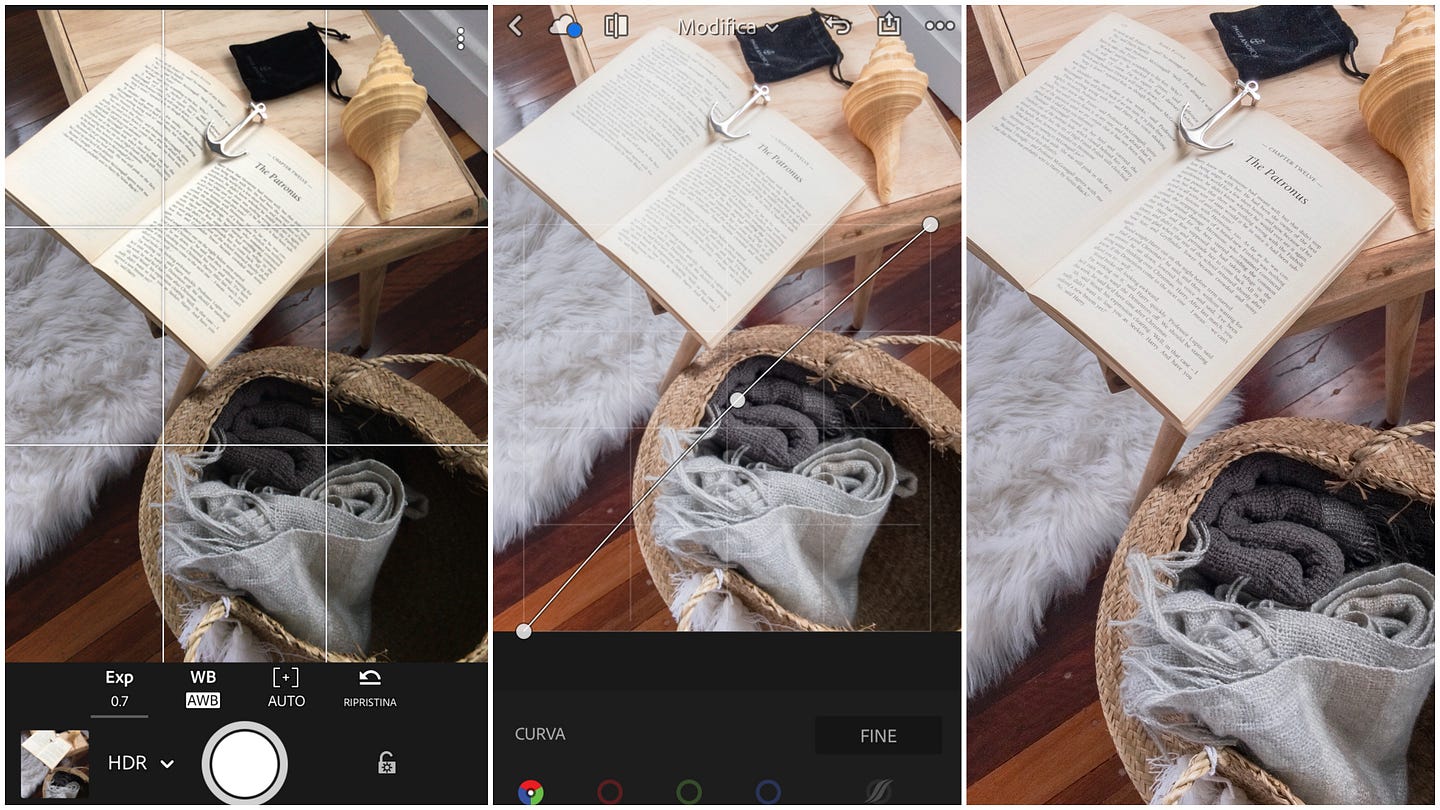
Once you are happy with your photo’s exposure, it is time to pick a filter and create your signature style.
There are tons of apps to provide you with filters, but here are my top 3 favorites. Feel free to pick one and experiment based on what final result you are aiming for.
ENLIGHT by Lightricks
Enlight is a powerful photo editor for enhancing and manipulating your
images. Besides being an editing tool, it also features a blog with new content every week. This will help you get the best out of your app, along with step-by-step tutorials.
I use Enlight on almost every photo I post to Instagram. It has an extremely well-designed user interface, which makes it user-friendly and easy to play with.
To me, the most powerful tools are the Target tool, that allows you to apply targeted edits to specific regions of an image; the Heal tool, that allows you to remove unwanted flaws without being a photoshop master; the Tilt
Shift tool, which allows you to create layers and add depth to your photographs.
All these tools have a Mask option, meaning you can restrict your effects to only affect a targeted area of the photo.
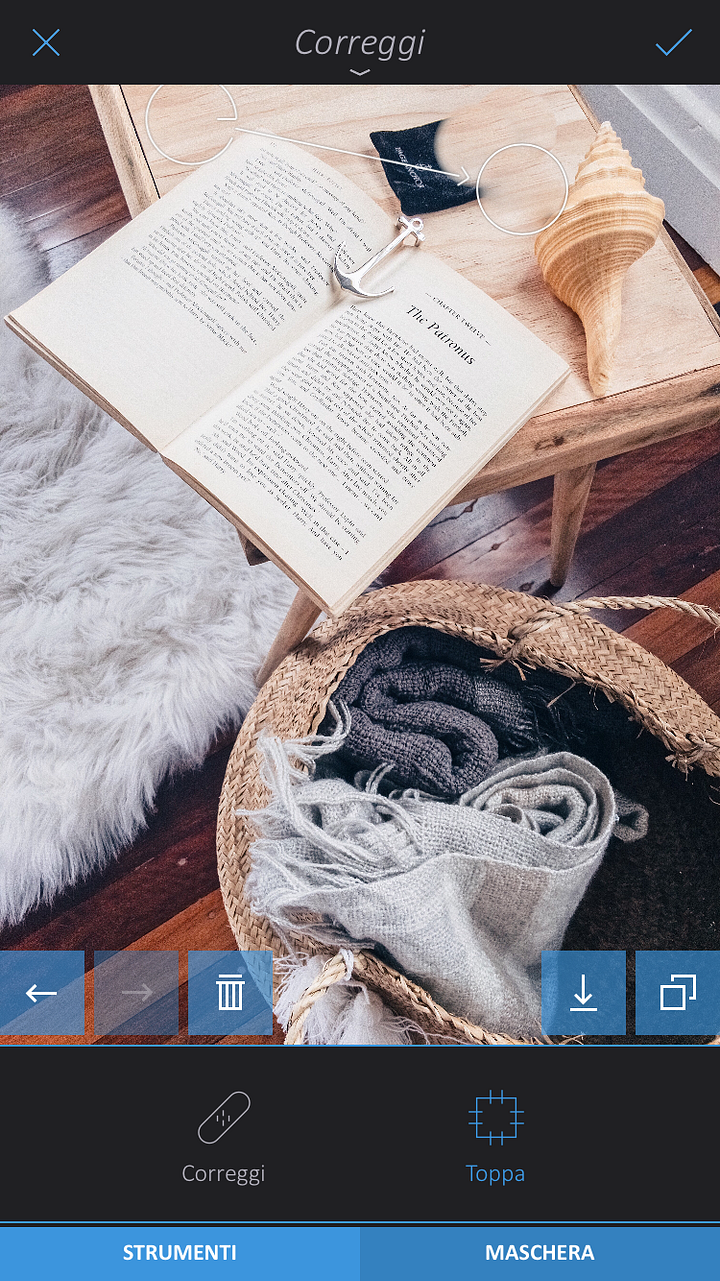
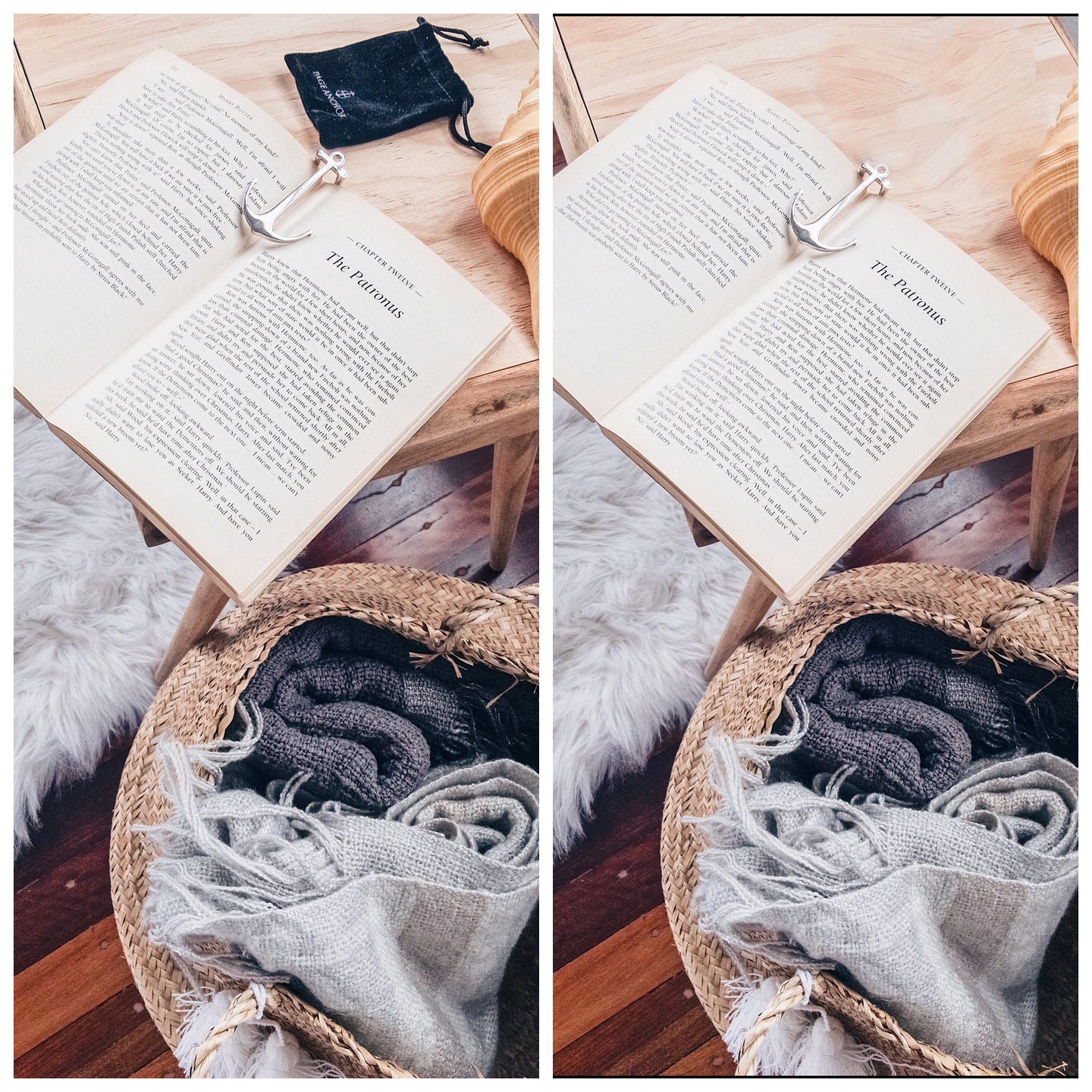
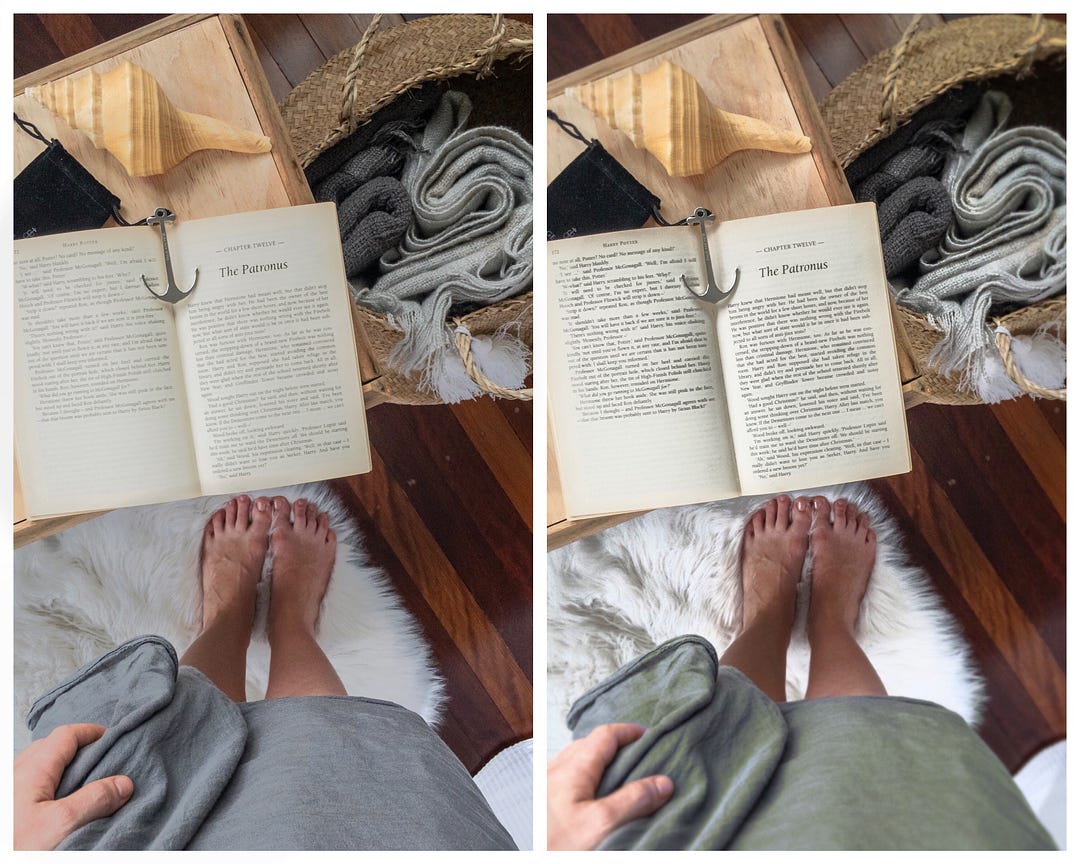
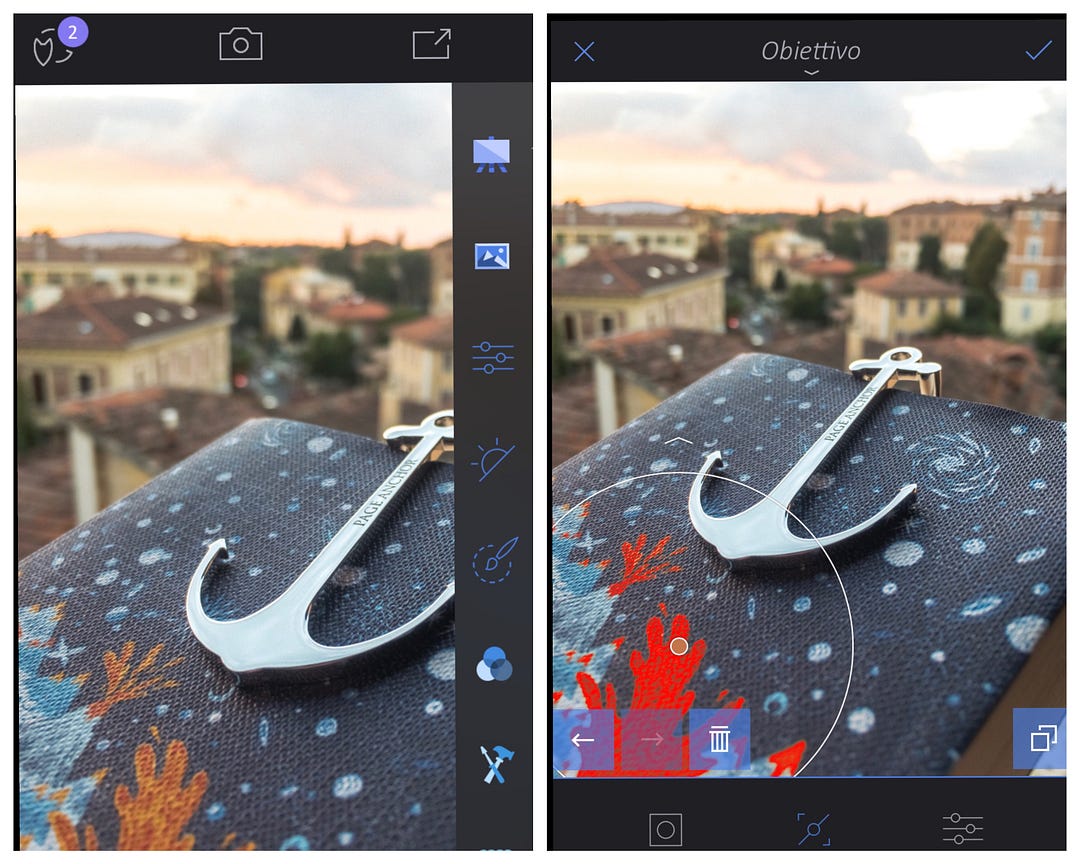
AFTERLIGHT, by Afterlight Collective Inc. (1,49 $ on AppStore)
Afterlight is the perfect image editing app for quick and straight
forward editing with 79 filters and 78 textures.
If you are already active on Bookstagram, you may have noticed a growing trend for old, vintage-styled, beige-toned photographs
You can easily recreate those vintage effects on photos taken with your mobile thanks to Afterlight that has a range of texture overlays. From scratchy and dusty film textures to natural light leaks.
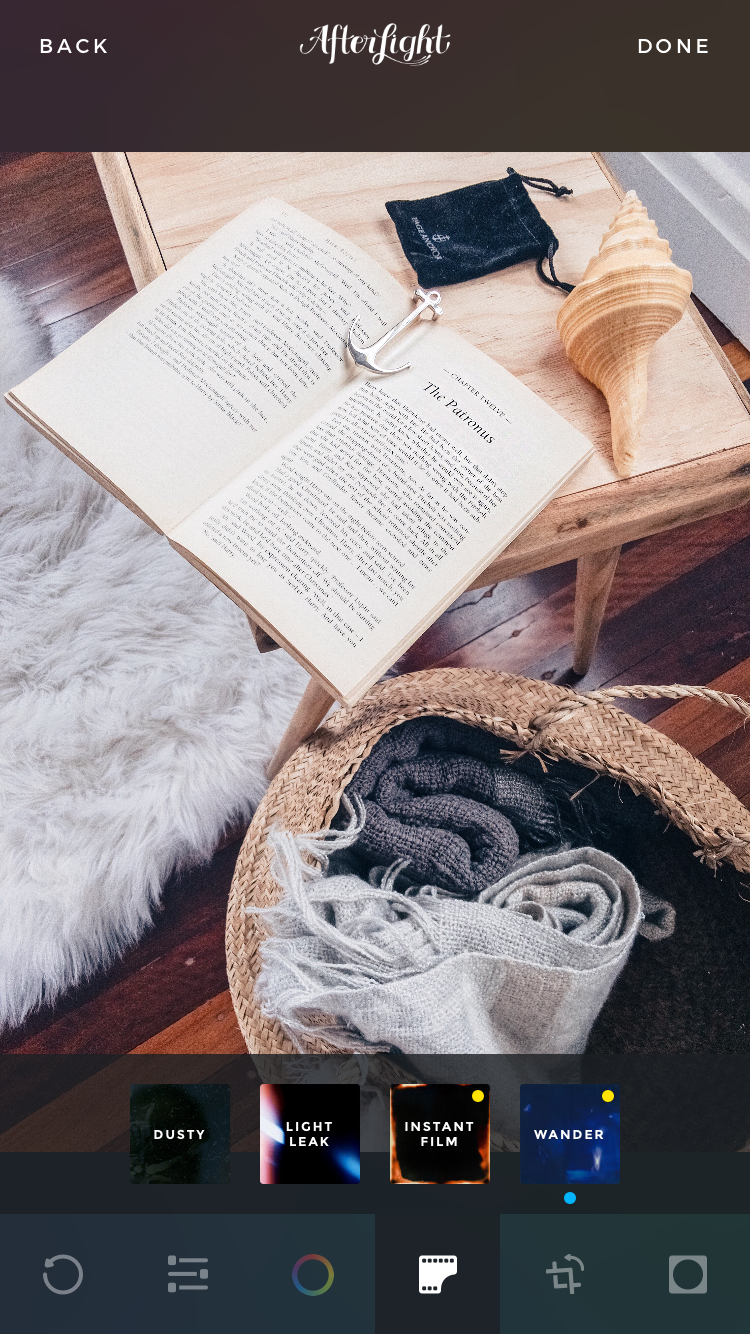
VSCO, by Visual Supply Co. ( if you don’t know about it, where have you been all this time? It’s free! )
VSCO is THE app you want on your phone. Elegant, minimalistic and
easy to use. A must for every serious Bookstagrammer.
Similar to ENLIGHT, VSCO is much more than just an app. It is also a creative community with incredible content, where you can find inspiration and showcase your creativity. VSCO has a collection of beautiful presets that I suggest you to try, pick and stick to, in order to make your feed consistent.
This app is so good that sometimes you don’t even need to edit you photos, apply one of this filters, play with the intensity and you are done! Here are some of my favourite presets:
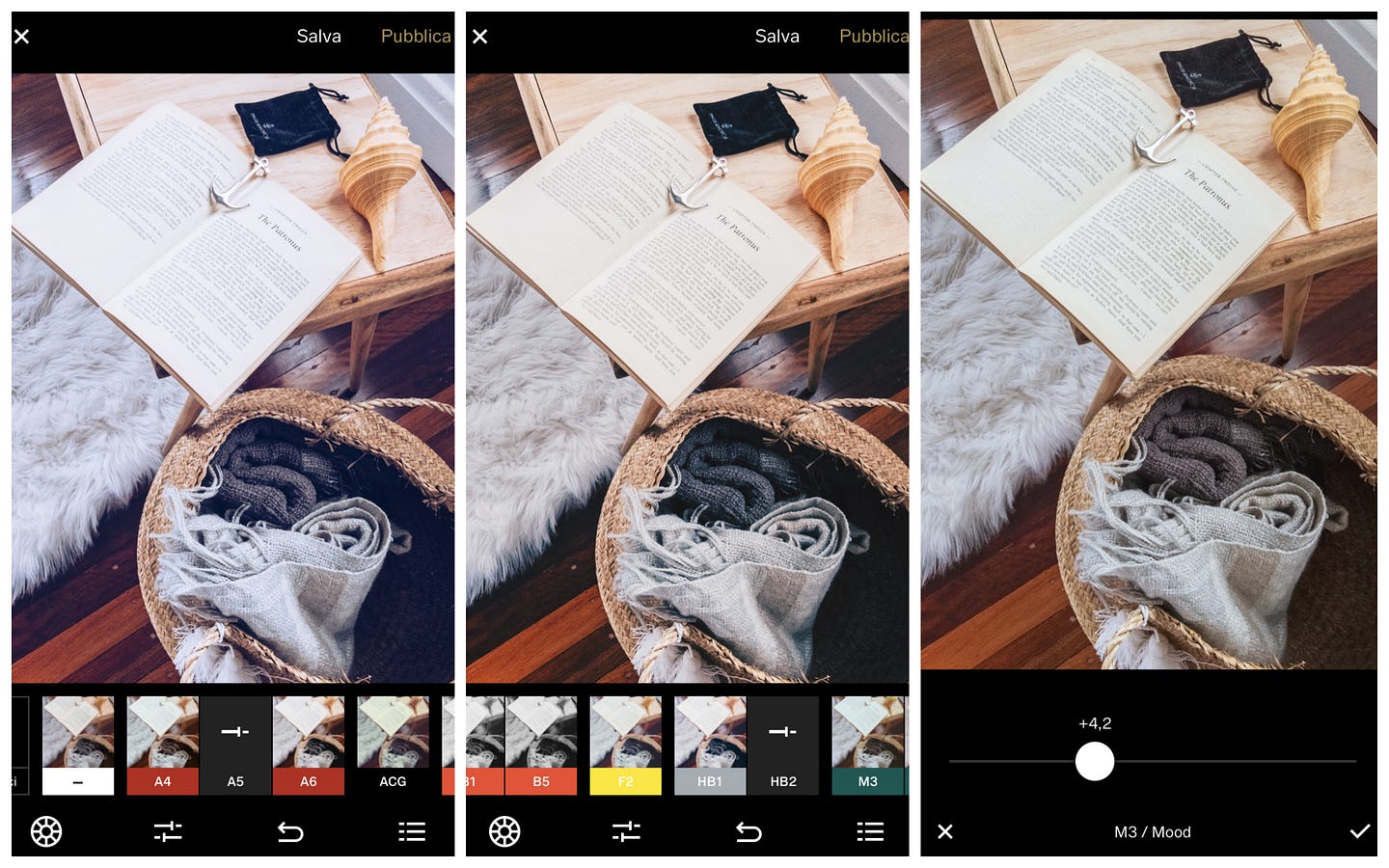
PHONTO by Youthhr (free)
Widely underrated, Phonto is an easy app that allows you to add text to
pictures.
This app is a great way to improve your Insta-story game, or create lovely covers for your blog, tumblr or Facebook.
Even if you don’t consider yourself good with calligraphy, you can use Phonto to create something like this:
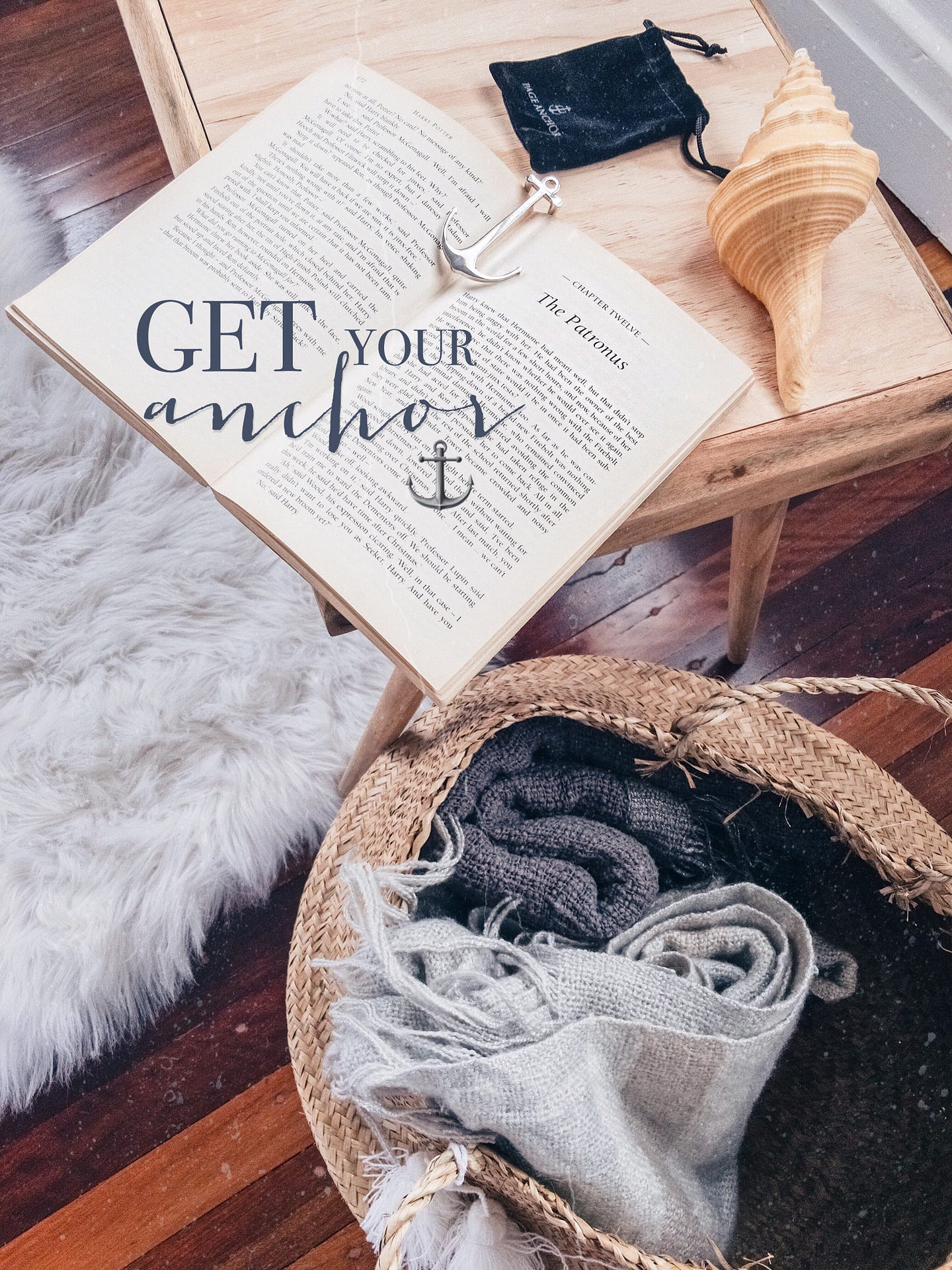
With so many editing options, it can be easy to overdo your edits. If you’re a beginner, I recommend sticking to the basic settings and experimenting from there.
Managing your feed
Besides editing, an important part of Instagram lies in managing how your photos look together.
Try using an app like PLANN (by @plannthat) to organise a preview of your Bookstagram feed before actually posting.
This will not only help you decide which image to post next, but also give you a better idea on which edit to choose if you can’t decide between two.
PLANN also lets you create collections of hashtags and set reminders to post in the most appropriate moment of the day.

6. Interacting with your followers (@lostinabookishcollection)
Interacting with your followers can be hard, especially when you don’t know what kind of interaction you want to have with your followers.
Personally, I still don’t know exactly what I’m doing. I do however have a few key pieces of advice for you to think about when interacting with others through your account.
Moderating comments and DMs
Don’t be afraid to have a discussion with your followers, especially if you don’t have the same views.
Understanding someone who thinks differently from you is a key part of enjoying Bookstagram. However, if someone is making you uncomfortable, delete their comment immediately. Out of sight, out of mind.
This can apply to a whole range of comments, one example being the ones from creeps saying “Hey sexy lady” and so on. It’s unnecessary and honestly just plain gross.
Another example of comments that I delete are the “l4l” (like-for-like) comments. They make the comments feel cluttered and they also give off a bad vibe when you have 300 of the same comment asking for a like.
Do not feel pressured to follow or like them, begging for likes and comments will get you nowhere, these people don’t actually care about your content and just want a boost on their recent post.
Being kind to everyone
Always be kind to everyone, regardless of views and opinions.
Sadly, the Bookstagram community has had a lot of bullying taking place in recent times.
Most of this bullying was caused by intolerance towards different views. If you don’t like a book, that’s perfectly ok. Be honest and state your opinion, but try not to be rude.
Discuss your views with those who don’t have the same as you and remember that there’s a block button for a reason. If someone is rude or discriminating against you, walk away. You don’t have to deal with them if you don’t want to.
Managing comments
I recommend trying to reply to comments as they come in. I know it’s hard, and there are moments where I put it off too. But if you go through them as you go, there will be less to do later.
Personally, I think replying to comments is a must—otherwise you may as well turn them off and have no one comment in the first place, and for me comments are a massive part of who I’m friends with. Have fun, chat with people and talk about whatever you want. That’s how you form friendships and have fun.
Don’t be scared of just sending someone a DM, no matter how big their account is. If you’re shy or socially awkward then it’s likely those who you want to talk to are too. I personally try to reply to all my messages, it may take me a while, but eventually you’ll get a reply.
To summarize, just remember to be polite and kind, without feeling forced into anything. Be open to other’s opinions, regardless if they differ from yours. And if you ever feel uncomfortable, don’t be afraid to say no or use the block button.

7. How to Grow
While we’ve covered a large portion of the key elements to running a Bookstagram account, there’s still a major question that we have yet to talk about, and that is: What is the best way to grow my account?
Some of you might have experienced the frustration of putting great effort into creating content for an Instagram account, but seeing little to no results.
Let’s dive into how we can prevent that from happening.
When I first started my IG account, the Bookstagram community was fairly small. Growth was never really something that I thought too much about.
I just wanted a few people to talk books with. But even when I wasn’t thinking of growth, growth happened. And I put that down to always being myself.
I post content that means something to me, even if it’s a sponsored post.
I also try hard to reply when someone leaves a comment, because it really means a lot that they take the time to like and comment on what I post.
To anyone just starting out I say be visible. Interact with your followers, ask a question on each of your posts for people to answer, visit other accounts and like and comment on what they post, and be yourself. Don’t stress the numbers too much. Enjoy the ride. The followers will come. —@lifeandliterature
7.1 Staying consistent (@pageanchor)
In the modern days of Instagram, your feed is no longer determined by who out of the people you follow posted most recently.
Instead, Instagram has a series of algorithms that try to figure out which posts are the most interesting and then push those.
This ensures that the content you see in your feed stays relevant, which is great! On the flipside though, it also creates some trouble for you as a Bookstagrammer, as your posts won’t be reaching all of your followers.
One of the most effective ways to beat Instagram’s algorithms is to post often. The more you post, the more engagement you can expect to have.
Engagement is a key variable that Instagram looks for when deciding which photos should be given the highest reach. This, in turn, means that Instagram will be more likely to show your photos on your followers’ timelines.
So, to summarize: Posting often will over time increase how many people see your posts; more people seeing your post means more people will click your profile, which in turn means you will gain more followers.
Moral of the story: post consistently. — @stefiereads

With the @pageanchor account, we track our Instagram data on a weekly basis. As seen in the scatterplot above, reaching more people with your posts also means that more people will be entering your profile.
This further strengthens @stefiereads’ point. Post as often as you can to maximize how many people you reach, and in turn, how many people follow you.
Lastly, never stop posting completely. In an analysis by Union Metrics, this was shown to be the easiest way to lose followers. See graph below.

7.2 Exactly how often should I post? (@stefiereads)
The short answer is: find the best time that works for you.
For example, if you choose to post five times a week, stay consistent with that. If you are a busy person, try with three-four times a week. Just try to find the best time for you.
I post once a day, twice when I have an “I need to share it to the world right now”extra photo, which is SO rare! I have never post three times a day, because I feel it’s too much.
Whatever you do, just make sure you do not stop posting.
Taking it a step further
If you want to put in the extra work, you can use an app like Iconosquare or using Instagram business tools where you can analyze your account in more detail.
This will help you get information about the best time to post daily, where most of your followers come from, your most liked photos, etc.
Personally, I use Instagram business tools to see the best time to post. But even so, sometimes I just post whenever I want.
The most important thing for me is to consistently post on a daily basis.
You may be wondering if I ever skip posting a day or two. The answer to that is YES, but I try not to.
Other than that, good luck, and please don’t stress things too much.
At the end of the day, you should never let yourself get so caught up on growing your followers that you forget the first and foremost reason why you are starting bookstagram, which is to share your love for books.
I mean seriously, just have fun!
7.3 Understanding your audience (@thejournaltea)
To me, the most important key to gaining followers on Social Media is to know which people you want to reach with your content.
It doesn’t really matter if you’re a big company, a small blogger or an everyday Instagrammer — it is important to know who your audience is and who you want you audience to be.
Creating a persona
The more detailed of a description you can have of who your followers are, the easier it will be to stay on track with your content.
Try taking a piece of paper and imagine, in as much details as possible, who your follower is. Try drawing or describing that person. What is she wearing, what does she read, what music does she listen to? By being as detailed as possible you force yourself to create a clear image of this person.
Once you have created your follower persona, you also have a guideline for what type of person you want to reach with your photos.
Based on this guideline, you can begin planning your content.
Quality content
Now that you know who your target group is, you are ready to create quality content that works for them; content that you believe they would enjoy.
But what is quality content? To me, quality content on Instagram are posts that are unique, inspiring and most importantly YOU! Your personality (or brand) should always be present and practically add the “cherry on top“ of every post you create.
Don’t try to copy other people and simply be yourself! That’s real quality.
Be active
From a distance, it might look easy, but having a lot of followers is a lot of work.
As mentioned earlier in this post, being active and posting consistently are two crucial factors to your account’s growth.
Upload as often as you are comfortable with, but know that frequency matters. For some people it may be 2 posts per day, for others, it’s 2 posts per week.
You’ll have to figure out a personal schedule that works best for you! Just don’t forget to be consistent.
Lastly, be active in your community. Comment or like posts you love by people who have the same topics as you. Show who you are and get out there!

7.4 Patience is key (@pageanchor)
If you’ve made it this far, it means you’re already on your way to becoming a master Bookstagrammer.
We would like to leave you with one last key piece of advice, and it cannot be stressed enough: You need to stay patient.
Instagram growth is a marathon, not a sprint.
Learn to love the craft. Do not let short term dips in likes, follows or comments affect how you run your account.
The truth is, there are simply too many non-controllable variables that could be affecting the results you are seeing, so don’t let it get to your head. Just keep doing you; the rest will follow.

Thank you so much for reading! If you want to learn more about Page Anchor, check out our website or Instagram.
Contributing authors:
- @lifeandliterature
- @littlelattelibrary
- @celine.depoitiers
- @lostinabookishcollection
- @beingabooknerd
- @dustpages
- @tildareads
- @thebibliotheque
- @libretto_reviews
- @thejournaltea
- @stefiereads
- @sabrinafelizitas
Before you go: Do you want to save this guide for later? Click to download this Bookstagram guide as an eBook →

